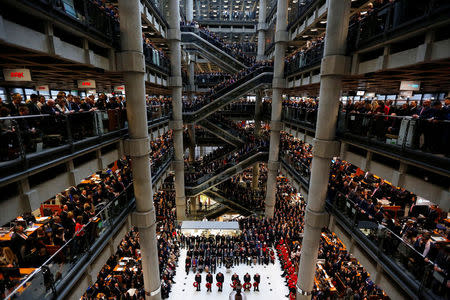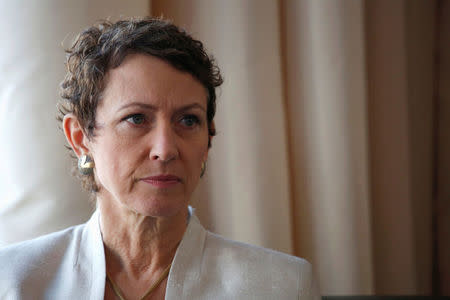Lloyd's of London reviews costs after swinging to 2 billion sterling loss
By Carolyn Cohn
LONDON (Reuters) - Lloyd's of London will focus on cutting costs and improving its underwriting performance after a series of natural catastrophes pushed the specialist insurance market into a 2 billion pound loss, its first in six years.
Insurers globally suffered a record $135 billion (£96 billion) in losses from natural catastrophes such as hurricanes in the Caribbean, earthquakes in Mexico and wildfires in California last year.
The Lloyd's of London market, which has 80 syndicate members, reported a 2017 pretax loss of 2 billion pounds ($2.80 billion) on Wednesday, compared with a pretax profit of 2.1 billion pounds in 2016. Major claims totalled 4.5 billion pounds.
"We had very substantial large claims, more than double last year, so it's not surprising that it takes us from profit to loss," Bruce Carnegie-Brown told Reuters by phone.
"Our plans for 2018 are focused very much on closing the performance gap, which is both an underwriting issue but also focuses on the cost structures in the market."
Lloyd's, which started life in Edward Lloyd's coffee house in 1688, is trying to innovate as it has been losing market share, including with expansion into emerging markets.
It was almost brought to its knees by a scandal in the 1990s due to asbestos-related claims, which wiped out many of its individual investors, known as "names".
Lloyd's members include listed insurers Beazley <BEZG.L> and Hiscox <HSX.L>. Hiscox dates its history to the Roberts marine insurance agency which started in 1901, while Beazley began in 1986. Like many firms at Lloyd's, they also operate outside the Lloyd's market.
Beazley suffered a 43 percent drop in 2017 pretax profit, it reported last month, while Hiscox's profit dropped more than 90 percent.
However, insurance premiums have risen since the disasters, encouraging new investors into the market and boosting profit expectations for 2018.
So far progress in cost-cutting has been slow. Members must increase the proportion of business they process electronically to 30 percent by the end of the year, Lloyd's said this week. It carried out a redundancy programme last year.
Lloyd's also said in its annual report on Wednesday that its
planned EU subsidiary would be operational by July 2018, to cope with Britain's departure from the European Union.
Lloyd's is applying for a license for the subsidiary so it is ready to write business by Jan 1, 2019.
Lloyd's has identified office space in Brussels and started hiring around 40 staff for the unit, Carnegie-Brown said. He expected the staff to be split around 50:50 between existing employees and new hires.
Its chief executive, Inga Beale, was paid 1.3 million pounds last year, down 14.5 percent from 2016, the annual report showed. Carnegie-Brown, who took over as chairman in the middle of last year, was paid 327,000 pounds.
(Reporting by Carolyn Cohn. Editing by Ben Martin and Louise Heavens)

 Yahoo Finance
Yahoo Finance 

